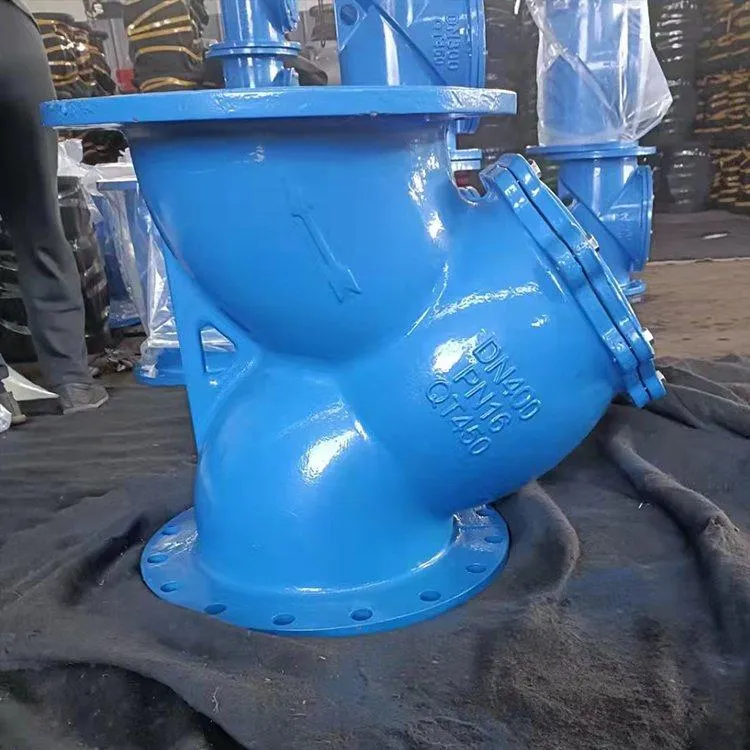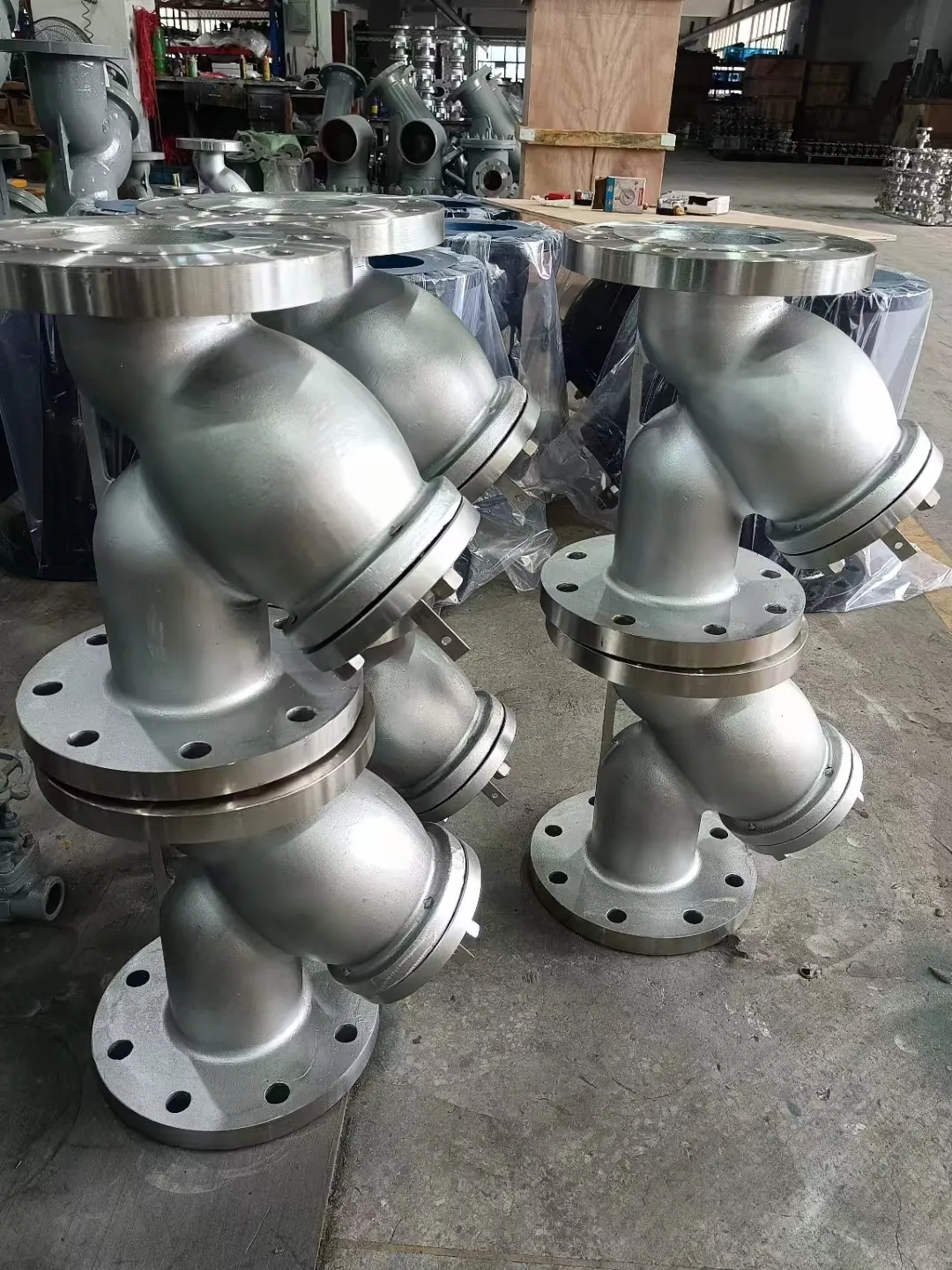May . 12, 2025 17:27 Komawa zuwa lissafi
Cast Iron Y Strainer: A Reliable Solution for Dirty Fluids
The Y type filter is an essential component in various industrial and commercial applications, designed to manage and maintain fluid systems effectively. Its unique shape resembles the letter "Y," which facilitates the separation of unwanted particles from liquids and gases. This design allows for efficient filtration while minimizing pressure loss in the system. The cast iron Y type strainer is particularly notable for its durability and strength, making it suitable for harsh environments where other materials might fail.

In industries such as water treatment, chemical processing, and oil and gas, the ci Y type strainer plays a critical role in protecting pumps, valves, and other equipment from damage caused by debris and contaminants. By ensuring that only clean fluids pass through the system, these strainers help maintain operational efficiency and prolong the lifespan of essential machinery. Moreover, the use of flange type strainer configurations allows for easy installation and maintenance, making them a preferred choice for many engineers and operators.
The versatility of the flanged Y type strainer is another significant advantage. It can be integrated into various piping systems, accommodating different sizes and pressure ratings. This adaptability ensures that industries can find the right solution for their specific needs, whether in a new installation or as part of an existing setup. As the demand for reliable filtration systems continues to grow, the Y type filter remains a go-to option for professionals seeking to enhance the performance and reliability of their fluid systems.
The Advantages of Using Cast Iron Y Type Strainers
Choosing a cast iron Y type strainer offers numerous benefits that contribute to its popularity across various sectors. One of the most significant advantages is its robust construction. Cast iron is known for its strength and resistance to wear and tear, making it ideal for handling dirty fluids that may contain abrasive particles. This durability ensures that the ci Y type strainer can withstand high pressures and temperatures, making it suitable for demanding applications.
Another key benefit of the flange type strainer is its ease of maintenance. With a straightforward design, operators can quickly access the filter element for cleaning or replacement without disrupting the entire system. This feature is particularly valuable in industries where downtime can lead to significant financial losses. Regular maintenance of the flanged Y type strainer helps prevent clogging and ensures optimal performance, allowing for continuous operation without unexpected interruptions.
Furthermore, Y type filters are designed to handle a wide range of flow rates and fluid types. Whether dealing with water, oil, or chemicals, the adaptability of the cast iron Y type strainer makes it suitable for various applications. This flexibility allows industries to standardize their filtration solutions, reducing inventory costs and simplifying maintenance procedures. By investing in high-quality strainers, businesses can enhance their operational efficiency and ensure compliance with industry standards, ultimately leading to improved productivity and profitability.

Installation and Maintenance of Flanged Y Type Strainers
Proper installation and maintenance of flanged Y type strainers are crucial for maximizing their effectiveness and longevity. When installing a cast iron Y type strainer, it is essential to follow the manufacturer's guidelines and ensure that the strainer is correctly oriented within the piping system. Typically, the inlet should be positioned at the bottom of the "Y," allowing debris to settle at the bottom and facilitating easier cleaning.
During installation, it is also vital to check for any leaks or misalignments that could affect the performance of the ci Y type strainer. Ensuring that the flanges are properly aligned and that gaskets are in good condition will help create a secure seal, preventing fluid from escaping. Additionally, operators should consider the flow direction indicated on the strainer body to ensure optimal filtration performance.
Regular maintenance is equally important for flange type strainers. Operators should establish a routine inspection schedule to check for buildup of debris and contaminants. Depending on the fluid being filtered and the operating conditions, cleaning intervals may vary. However, it is generally recommended to inspect the flanged Y type strainer at least once every few months. When cleaning, operators should remove the strainer from the pipeline, disassemble it, and thoroughly clean the filter element to remove any accumulated particles. Regular maintenance not only ensures optimal performance but also prolongs the life of the strainer, ultimately resulting in cost savings for the business.
Why Choose CI Y Type Strainers for Your Operations?
The decision to choose ci Y type strainers for your operations is one that can significantly impact the efficiency and reliability of your fluid systems. As industries increasingly prioritize operational excellence and cost-effectiveness, the advantages of these strainers become evident. The robust construction of cast iron Y type strainers ensures that they can handle the rigors of demanding applications while providing dependable filtration.
Furthermore, the versatility of the flange type strainer allows for seamless integration into existing systems, making it a practical choice for both new installations and retrofitting projects. The ease of maintenance associated with these strainers also contributes to their appeal, as it minimizes downtime and ensures that operations remain uninterrupted.
Additionally, the ability to customize the flanged Y type strainer to meet specific requirements, such as size and pressure rating, makes it an attractive option for a wide range of industries. By investing in high-quality strainers, businesses can enhance their operational efficiency, reduce maintenance costs, and ensure compliance with industry standards. Ultimately, choosing ci Y type strainers is a strategic decision that can lead to improved productivity and long-term success in fluid management.

FAQs: Understanding Cast Iron Y Type Strainers
What is a Y type filter, and how does it work?
A Y type filter is a filtration device designed to separate unwanted particles from liquids or gases. Its unique "Y" shape allows for efficient flow while trapping debris, ensuring that only clean fluids pass through the system.
What are the benefits of using a cast iron Y type strainer?
Cast iron Y type strainers are known for their durability, resistance to wear, and ability to withstand high pressures and temperatures. They are ideal for filtering dirty fluids and require minimal maintenance.
How do I install a flanged Y type strainer?
To install a flanged Y type strainer, ensure it is oriented correctly with the inlet at the bottom. Check for leaks, align flanges properly, and follow the manufacturer's guidelines for secure installation.
How often should I clean my ci Y type strainer?
Cleaning intervals for ci Y type strainers depend on the fluid being filtered and operating conditions. It is generally recommended to inspect and clean the strainer every few months to prevent clogging.
Can I use a flanged Y type strainer for different fluids?
Yes, flanged Y type strainers are versatile and can handle a wide range of fluids, including water, oil, and chemicals. Ensure that the strainer is rated for the specific fluid type and operating conditions.
Invest in the reliability and efficiency of your fluid systems with our premium cast iron Y type strainer offerings. Visit our website to discover our range of products and place your order today. Ensure your operations run smoothly with the best filtration solutions available!
-
Thread Plug Gauge Our Promise of Measurement ExcellenceLabaraiAug.22,2025
-
Gauge Pin Class Reflecting Quality LegacyLabaraiAug.22,2025
-
Check Valve Types for High Rise BuildingsLabaraiAug.22,2025
-
Water Control Valve for Irrigation SystemsLabaraiAug.22,2025
-
Gate Valve with Soft Seal TechnologyLabaraiAug.22,2025
-
Y Type Strainer for Oil and Gas ApplicationsLabaraiAug.22,2025
Kayayyakin da suka danganci









